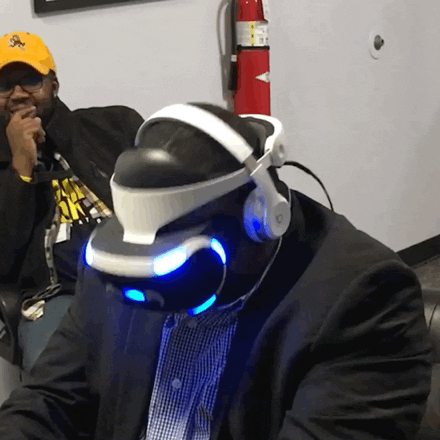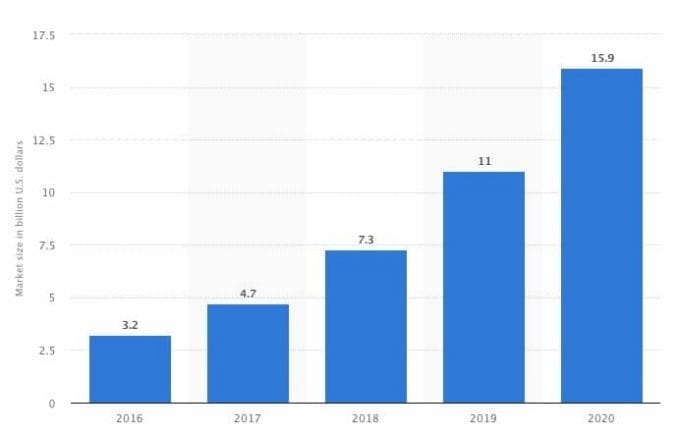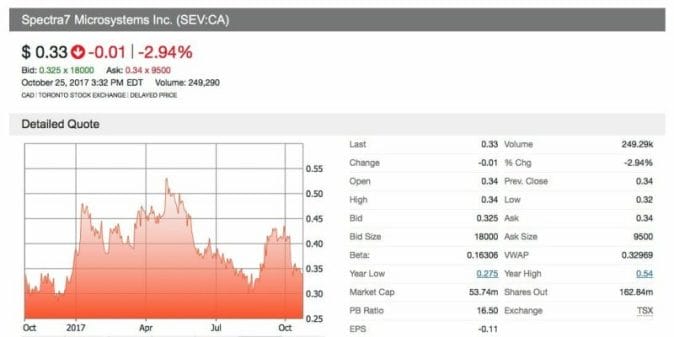Today I’ve decided to take a quick look at the Virtual Reality ( VR ) market in Canada with some ideas on where investing might be a good idea, and what is essentially vapourware.
The VR market is estimated to reach $7.1 billion by 2021:
I’m skeptical about this. 2016 was a big hype year for VR. (full disclosure, I bought a Playstation VR at launch last October.) There were wild sales projections and assurances this would become as ubiquitous as a home theatre system etc…
It didn’t quite roll out that way. How many friends do you know with a rig at their house? Maybe one or two (not including me). a quick googling sees dozens of articles from January 2016 with titles like ‘VR is here and it’s going to take over your living room’. January 2017 until today the headlines are more like ‘Is this a niche’ ‘What happened to VR?’.
With the major consumer players refusing to release absolute sales numbers, it’s clear neither Oculus, HTC or Sony are ecstatic about their sales numbers (To be fair – Sony has said its sales have been stronger than expected, but they didn’t manufacture a lot of headsets in their initial product run).
A lot of analysis points to a lack of software, the price point of entry as a chicken-and-egg problem with the sector. No one wants to spend on hardware without great apps and games, and the gaming studios don’t want to invest millions in what may turn out to be a niche market with a small install base.
Depressed yet? Don’t be. This technology is still in it’s first iteration. Take a look at this awesome graph:
Lots of good stuff here you can unpack about tech-hype. In this case I’d like you to note where VR is on the curve. It’s past the hype roller-coaster and on the steady curve to productivity.
Here’s where it ties together for you as an investor. This may not be the best time to invest in studios or software. It is an opportunity to look at innovative hardware and supply chain companies.
As the market continues to grow, albeit more slowly than the overheated press would have us believe, demand for components, or new ways to make the equipment less bulky or cheaper will be big winners in the months and years to come.
A Canadian company moving in this space is Spectra7 Microsystems (SEV:T).
Spectra7 has a market cap of $50.71million and manufactures virtual reality hardware like head-mounted displays (HMDs). In the second quarter of 2017 Spectra7 reported revenue of $3.1 million, a 16 per cent increase from the previous quarter and an 18 per cent increase versus the same period last year.
Spectra7’s chips allow virtual reality and augmented reality devices to drive 4K UHD and 5K resolutions standard on the latest TV and computer displays.
Their patented design integrates cable, connector and embedded chip product line. This sort of integrated component will be essential to next-generation headsets especially as the drive continues to eliminate wires wherever possible.
Spectra7 seems slightly undervalued – tarred with the same brush as the rest of the VR market, which seems to be in a hold-your-breath-and-see-what happens mode. Might be time to grab some.
VR isn’t dead. It’s also not the next big thing (yet). It is growing, and wont’ shuffle off to the dustbin of history like the pocket pager. However it ends up being used, VR gear will still need the hardware and the suppliers of the custom components will likely continue to grow so it make sense to pick up some action now.
Full Disclosure: I own a PSVR. I do not own stocks in any VR companies or companies mentioned above.




